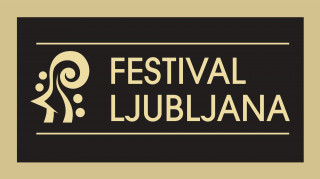Important information
Opening Hours of the Exhibition:
Monday-Friday: 10.00 am-4.00 pmOn days, when there are 72nd Ljubljana Festival events in Križanke: 12.00 pm-start of the event
Entrance to the opening of the exhibition on 19 August is possible only with an invitation.
Academy-trained sculptor Frančišek Smerdu (1908, Postojna–1964, Ljubljana) is remembered on the one hand as a remarkably subtle and insightful interpreter of the human body, which he exalted, through his sculptural and wider artistic vision, in heroic, martial poses that are nevertheless full of human feeling, in public monuments commemorating important events or figures that typically feature monumentally accentuated perceptions of volumes, masses, surfaces and spaces; and on the other as a refined interpreter of the female form, from which he elicited softness, tenderness, gentleness, sensuousness, eroticism and spiritual beauty. He is a sculptor who incorporated into his own sculptural language the approaches of artists who had left their mark on sculpture from the late 19th century onwards and continued to do so throughout the greater part of the 20th century: above all Rodin, Maillol and Bernard but also his own teachers Kršinić and Meštrović. His subjects were those that were typical of the time and he addressed them in small sculptures (figurines, as Špelca Čopič calls them) and heads, the latter of which represented his entry into artistic life in Slovenia. Writing in 1938 or 1939, the eminent critic Stane Mikuž drew attention to the calm, dignified expression and considered proportions that came together in wonderful harmony: “The soft interplay of light and shade on the face, and the hair that frames it, sculpted in more detail, create a remarkably self-contained whole.”
At the Zagreb Academy of Fine Arts, which he attended between 1928 and 1932, he developed the skills he had acquired at the State School of Arts and Crafts in Ljubljana under Alojz Repič, France Kralj and Anton Sever, enhancing them with the new perspectives of teachers Rudolf Valdec, Robert Mihanović Frangeš and Fran Kršinić. He then crowned his training with a one-year specialisation in 1933 that enabled him to benefit from the breadth and expressive power of Ivan Meštrović and served him well as he embarked on his own artistic career.
Like many other natives of Primorska driven from their homes by the Italian Fascist authorities in the 1930s, Smerdu left Postojna for Ljubljana, where after the Second World War he made his mark as an insightful professor of sculpture at the newly established Academy of Fine Arts and, from 1937 until his death in 1964, a distinctive creator both of public works (the France Prešeren monument in Kranj, assisted by Peter Loboda, 1950–1951); the Resistance monument in Ljubljana, 1952; the Karst combatants monument in Postojna, 1952; the monument to fallen National Liberation Struggle fighters in Bukovje, with Zoran Didek, 1955; and of small sculptures and reliefs (in marble, fired clay and bronze). His monument to fallen National Liberation Struggle fighters in Postojna was the first sculptural memorial of its kind in the Primorska region. Critics included it among works defined as “flying sculpture”, a branch of action sculpture popular at the time in which, in the spirit of the new plastic idealism, the sculptural mass was animated by dynamics, action, the articulation of the body and billowing drapery to create a powerful impression of flight and momentum. Frančišek Smerdu also has a place in the history of Slovene sculpture as a creator of small, intimate works which, in their expressiveness, are monumental in their own way and which he created with the same enthusiasm as his large, monumental works. In an interview he gave during the Second World War, he spoke about his desire to bring his work closer to art lovers and encourage them to accept his new creative credo: “As you can see, with my sculptures I have tried to meet people halfway. That is why I am a small sculpture specialist. If they don’t like David, they might like a two-centimetre Samson. Or, speaking more seriously: I would like to create a small, intimate form of sculpture that is more easily accessible to people and that might open the door to understanding larger, more monumental works.”
Frančišek Smerdu has been the subject of several solo exhibitions. In 1971 the Museum of Modern Art in Ljubljana dedicated a posthumous retrospective to him, while in 1978, coinciding with what would have been his seventieth birthday, a major exhibition was held in his native Postojna. The most recent monograph on him, by Špelca Čopič, was published in 2000.
The exhibition in Križevniška Church will consist of a selection of small sculptures owned by the family of Frančišek Smerdu’s daughter Mojca Smerdu, herself an academy-trained sculptor, and serves to commemorate the sixtieth anniversary of his premature death.
dr. Nelida Nemec


